As well as containing large numbers of meetings yet again this week, it also included the pleasurable occasion when Dr Diane Heath and I handed over the pop-up banners on aspects of the history of St Mildred’s church – parish and people to those at St Mildred’s.
This took place at their Wednesday morning service, which was good timing because, I believe, Bishop Rose will be at the church this coming Sunday. Furthermore, it gave us the chance to meet Jenni Foster. She had helped Beth Brown, the Centre’s intern who had worked on researching the church’s history this summer, and who had produced much of the text that Diane had taken to design these attractive banners. It also meant we met several members of the congregation, as well as the Rev. Jo Richards, as you can see below.
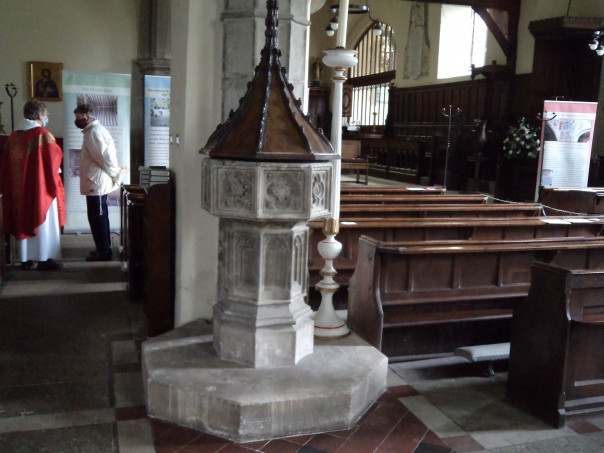
If you want some ideas about the history of the parish and people, please do visit the church when it reopens, hopefully by Easter next year, but in the meantime these will give you a taster: https://blogs.canterbury.ac.uk/kenthistory/ian-coulson-awards-maritime-kent-and-canterbury/
and I think some of the banners will be up in the church so that those attending services will have a chance to see them in rotation.
Nor are Diane and I moving away from ecclesiastical history just yet because we are also working with Stephanie Barnes, another MA student, to produce a series on pop-up banners for the postponed Eastbridge exhibition on ‘Kentish Saints and Martyrs’. All being well this will take place next August in conjunction with a week of talks in Canterbury’s parish churches and St Thomas’ RC church under the same heading. Due to some technical issues, we didn’t manage to meet up with Stephanie online this week, but our rescheduled meeting next week should hopefully see us moving towards designing the final banner on St Thomas of Canterbury.
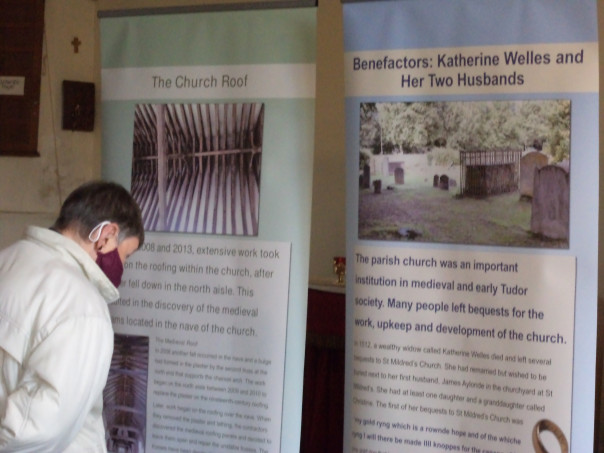
We are very grateful to the Canterbury Historical and Archaeological Society for providing a grant to cover the printing costs of these banners, the project coming under the oversight of Dr Claire Bartram as Co-Director of the Centre. I’ll bring you details of these banners that feature among others St Eanswythe, St Thomas of Dover and Elizabeth Barton at a later date, but for today I’m going to stick to Canterbury parish churches.
The two I have picked are St Mary de Castro and St Peter’s because one of the other interns at CCCU over the summer was researching Canterbury castle that almost abuts St Mildred’s church, and St Peter’s is within Jo’s joint ministry to St Mildred’s, St Dunstan’s and St Peter’s. As usual I’m going to the wills because for the Middle Ages they are our best primary source for these city churches, especially for St Mary de Castro that no longer exists.
So what do we know about this church? Well it was certainly there by the 13th century and survived until about 1540, but what about the lights and images, and can we glean anything else about its interior? There are a couple of interesting wills made by women, including that of Alice a Woode (1484) who, as the wife of Michael a local wheelwright, noted that she had made her will with his permission. Among her bequests was one of 13s 4d towards the repair of the image of Our Lady in the high choir, which sounds as though it was the church’s patronal image. Alice sought burial in the churchyard, whereas Johanna Frithe (1500) wished to be buried in the church itself, while her choice of burial before the image of St Katherine points to her having a special devotion to this virgin martyr.
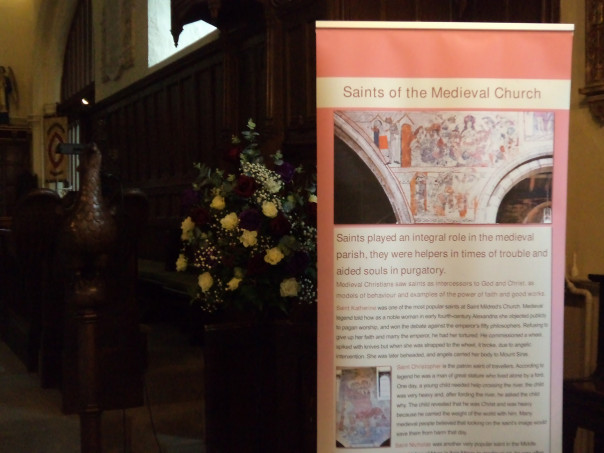
There would seem to have been another special image in the church, and like that of St Katherine this too may have been in association with an altar because Thomas Marlowe (1518) sought burial before the image of St Margaret. Furthermore, if we are thinking about the eastern section of the church, Roger Rydle (1470/1), a parishioner of St Mildred’s, gave the large sum of 80s towards repairing the chancel at St Mary de Castro, while Robert Sutton (1518) bequeathed 3s 4d towards the purchase of two altar cloths.
From these references to images, it is hardly surprising that there were bequests of small sums to the lights of Our Lady, St Katherine and St Margaret, and as at all churches the light of the holy cross was not forgotten either. However, to these we can add St Christopher, for example 2d from Henry Kenton (1491) and 4d from Johanna Frithe. Additionally some wished to fund more general repairs to the church, including John Whitwey snr (1487) who gave 6s 8d and William Baker (1506), another parishioner from St Mildred’s, who gave the much larger sum of 5 marks towards church repairs. William was equally concerned about road repairs and he wished his executors would see to the repairing of the way between St James gate, presumably at the old leper hospital, to the Iron Cross, a corruption of Tierne Cross, at the junction where Castle Street meets Watling Street/Beer Cart Lane.
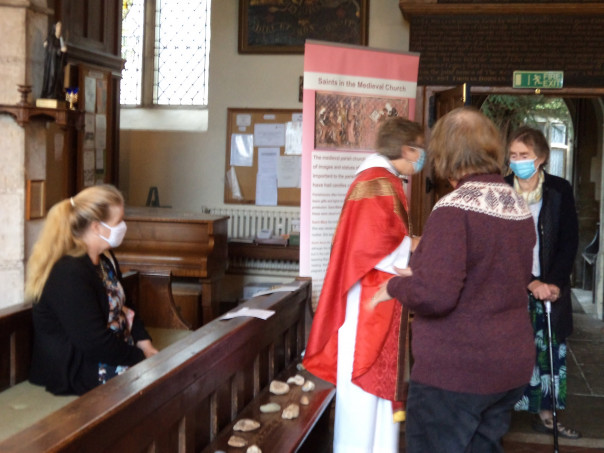
Turning to St Peter’s church we can explore this similarly. Again burial requests are helpful in that William Bygge (1470) wished to be buried in the quire at St Peter’s church, and twelve years later Sir John Colyns the rector seems to have wanted burial in the same area, referring to it as the chancel. By this time the church had pews because Alice Hygrleyn (1490), the wife of Thomas, wanted to be buried in the west end ‘before my pue there’, giving 6s 8d to pay for this digging up of the nave.
Constance Martyn (1513) sought burial in the choir before the image of Our Lady, stating that she wished to have a stone of five foot over her grave with the ‘scripture’ of her name engraved in laten on it without any image (of her). This was presumably close to Stephen Baret elder’s chosen place which was in the chapel of Our Lady in St Peter’s church, and it is feasible that the priest he wanted to pray for five years for his soul and those of departed Christians was to undertake this charitable, pious work, including presumably the celebrating of Mass at the altar there. His contemporary, Henry Swerder (1505), similarly sought burial in a side chapel, but he wanted that of St John the Baptist.
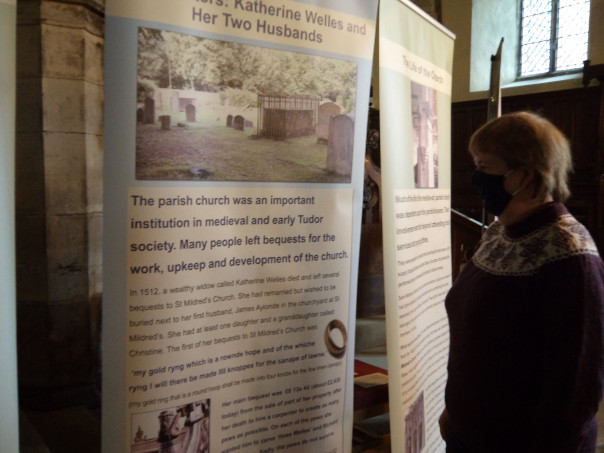
Adam Bell (1464) mentioned two fraternities at the church, those of St Peter and St John, giving 10d to each, but it is feasible that many of the other lights also had their own fraternity as a way to maintain the supply of candles and to offer a charitable system of devotion and support for members of the parish. Among the other lights remembered by parishioners were those of Our Lady, the cross, the Pity of Christ (perhaps the same as the Jesus light), St Katherine, Our Lady of Pity, the Trinity and St Luke.
Together these suggest that there were many foci for devotion within the church, providing parishioners with diverse chosen saintly protectors. Furthermore, some parishioners gave bequests for other aspects of the life of the parish, including the very large sum of £20 by William Bygge for the purchase of a full set of vestments, while Alice Hygrleyn gave 20s for the making of two new candlesticks for the hearse which would be used at the three ‘funeral’ services – burial, month’s mind and twelve month’s mind that were commonly deployed in the later Middle Ages.
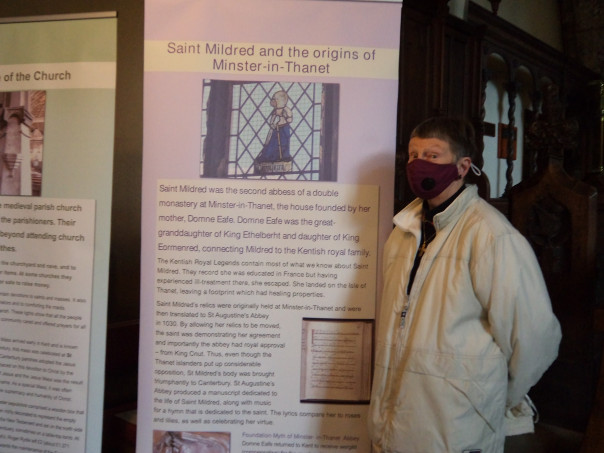
Finally, as at many of Canterbury’s parish churches, the parishioners in the early 16th century were concerned to construct a new rodeloft, and for St Peter’s we see Constance Martyn’s gift of a silver goblet towards this project. Thus, from the Canterbury wills it is possible to gain valuable insights regarding the devotional life of the parish and people, both men and women. And next week I shall bring you news of the Kent History Postgraduates.
 Centre for Kent History and Heritage
Centre for Kent History and Heritage Sheila Sweetinburgh
Sheila Sweetinburgh 1462
1462

